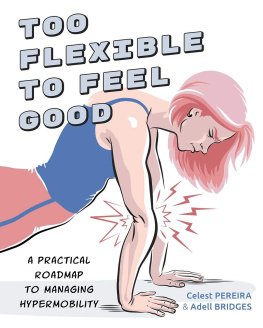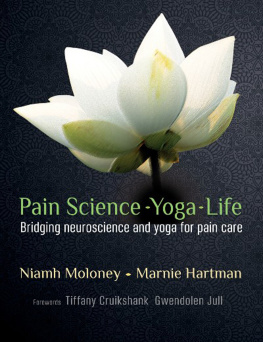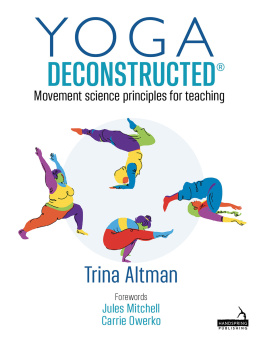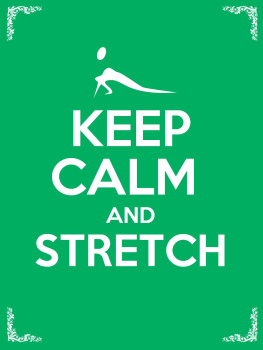First published in 2021 by Victory Belt Publishing, Inc.
Copyright 2021 Celest Pereira and Adell Bridges
All rights reserved
No part of this publication may be reproduced or distributed in any form or by any means, electronic or mechanical, or stored in a database or retrieval system, without prior written permission from the publisher.
ISBN-13: 978-1-628604-17-7
The information included in this book is for educational purposes only. It is not intended or implied to be a substitute for professional medical advice. The reader should always consult their healthcare provider to determine the appropriateness of the information for their own situation or if they have questions regarding a medical condition or treatment plan. The statements in this book have not been evaluated by the Food and Drug Administration, nor are they intended to diagnose, treat, cure, or prevent any disease. The authors and publisher expressly disclaim responsibility for any adverse effects that may result from the use or application of the information contained in this book.
Cover and interior design and illustrations by Yordan Terziev and Boryana Yordanova
Printed in Canada
TC 0121
d_r0
Table of Contents
Foreword
My name is Dr. Eric Cobb, and I am the founder of Z-Health Performancean education company that specializes in what we call brain-based or neurocentric training. Put simply, our company has spent two decades trying to bring the brain into the world of health, fitness, pain relief, and rehabilitation. Our primary job is helping professionals make the shift from a biomechanical approach to viewing the body and movement through a neurobiomechanical lens.
During this time, Ive met and worked with thousands of amazing individualsdoctors, therapists, researchers, coaches, athletes, and more from all over the world. While Ive learned so much from so many of them, it has been rare to meet professionals who have such a vision for helping their clients that they are willing to learn, grow, and change a model that has already been successful. This is one of the reasons it gives me such tremendous pleasure to be asked to write this foreword for Celest and Adell.
Just over a year ago, I was introduced to these two wonderful people via the wonders of Instagram. While I am a bit of a Luddite when it comes to social media because of the tremendous amount of misinformation sent out to the world on an hourly basis, it can still be a powerful force for good.
My first introduction to their work occurred via their Hypermobile Yogis account. I was immediately drawn to some of the photos and content because they were directly echoing so much of what we know about hypermobility. Their side-by-side photographs demonstrating decreased flexibility coupled with their focus on these changes as a better result of training sparked the desire to learn more about their approach. This led to a yearlong whirlwind exchange of ideas regarding bringing neurology more deeply into their already fantastic work.
Heres why this matters.
As a neurology guy, I have an intense interest in noticeable differences in brain function and structure in different populations. Having a background of working with professional dancers and world-class gymnasts, I had already invested quite a lot of time digging into the existing research around hypermobility and the brain.
As it turns out, we already know a lot, and its incredibly fascinating. The simple takeaway is that the hypermobile brain is different, and the differences matter not just in terms of movement, but also in fatigue, pain, anxiety, and a host of other issues. The question has been, like so much research, how can we take this information and make it practical?
In this book, you are going to find some critical answers to that question. While some of the material may seem a bit strange at first, rest assured that it is based both on credible research and real-world application.
The hypermobile population has long been underserved or ignored in traditional training approaches. This is incredibly unfortunate because, as I mentioned, research is clearly demonstrating that hypermobile brains are different. This means that a specific, targeted training program is essential for making these bendy bodies as pain-free and functional as possible.
Celest and Adell have done a remarkable job over the last year of studying brain-based training concepts and integrating them into their own personal training and coaching with tremendous results. I am so pleased to see them incorporating these concepts into this book and so excited to hear about the life-changing results you will experience as you apply them in your own training.
Keep Moving,
Dr. Eric Cobb
Founder, Z-Health Performance

INTRODUCTION

There are superhumans among us, and you may be one of them. On the surface, these people seem to be less-than-ordinary living wrecks. They are marooned with fatigue while others around them are power-boating with seemingly never-ending energy. They have ongoing gut issues even after years of obsessive attention to healthy eating, more than any of their I-give-birth-once-a-day-to-a-perfectly-formed-poop friends. They are secret heroes who somehow cope with stomach-churning anxiety even though they have a brimming personal arsenal of meditation and breathing techniques to help spawn some semblance of calm and inner peace.
Often, they are made to feel, by their doctors, their peers, and the rest of society, like hypochondriacs or freaks, when in truth they are unknowingly walking around with untapped superhuman abilities.
Were talking about people with joint hypermobility spectrum disorder (JHSD or hypermobility for short), and the reasons they (and perhaps you too) are superhuman will become clear as you work your way through this book. For now, know that if you picked up this book because you thought, Too Flexible to Feel Good? That sounds like me! you are not imagining your symptoms. Youre not a freak, youre not a hypochondriac, and you are definitely not alone.
What Is Hypermobility?
Hypermobility is a spectrum disorder that affects around 15 to 20 percent of the population, meaning its more common than being left-handed, standing over six feet tall, or having a third nipple. (Its difficult to know precisely how many people are affected since hypermobility so often goes undiagnosed and indeed unnoticed.) Therefore, it may seem baffling that you can bring it up at any dinner party, maybe even a dinner party full of doctors, and hear most of them say, Wow, Ive never heard of it! (The sheer lack of awareness of this disorder sends shivers down our spines.)
One reason for this is that the spectrum nature of the disorder makes it challenging to spot. Its not exactly a third nipple, right there for you to see in all its glory every time you look in the mirror. Also, a spectrum disorder has minimal effects on some people, allowing them to lead normal healthy lives, whereas others can be ticking time bombs of chronic illness, struggling with eclectic arrays of symptoms that, frankly, suck ass.













